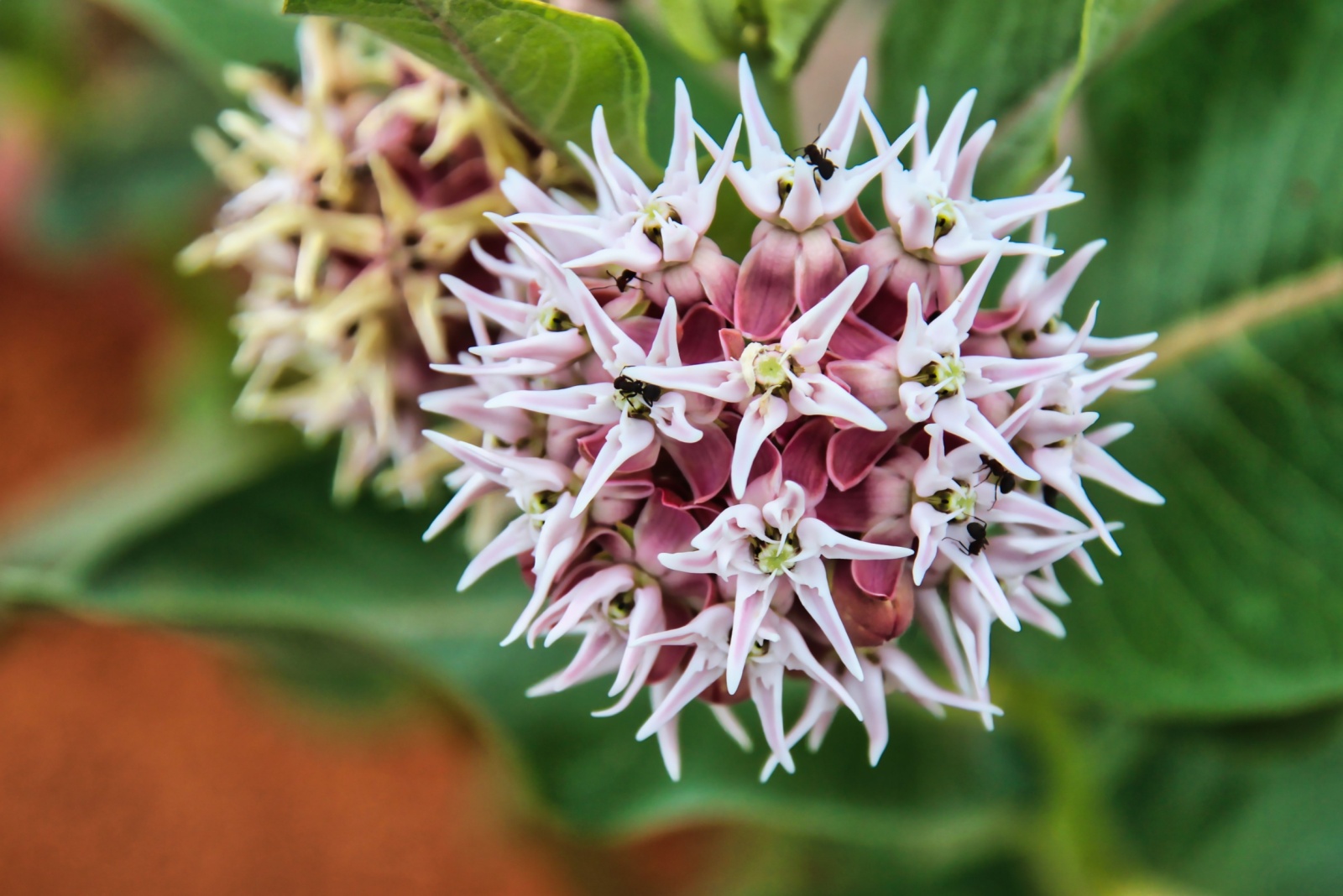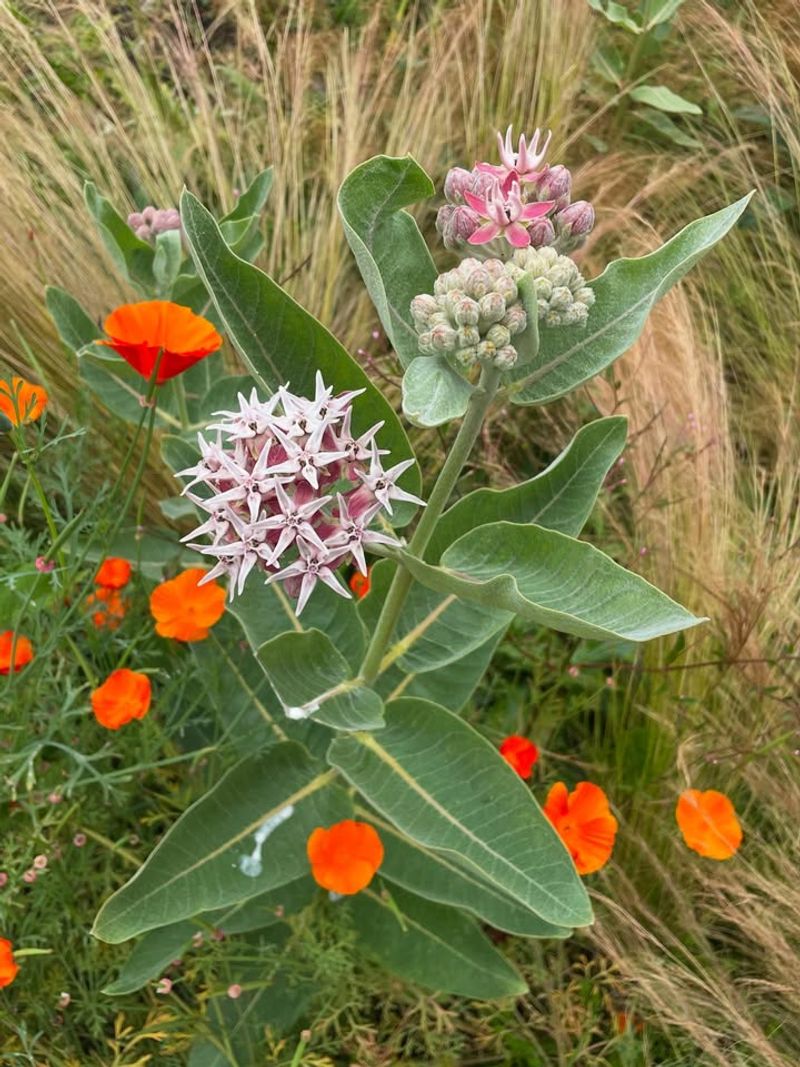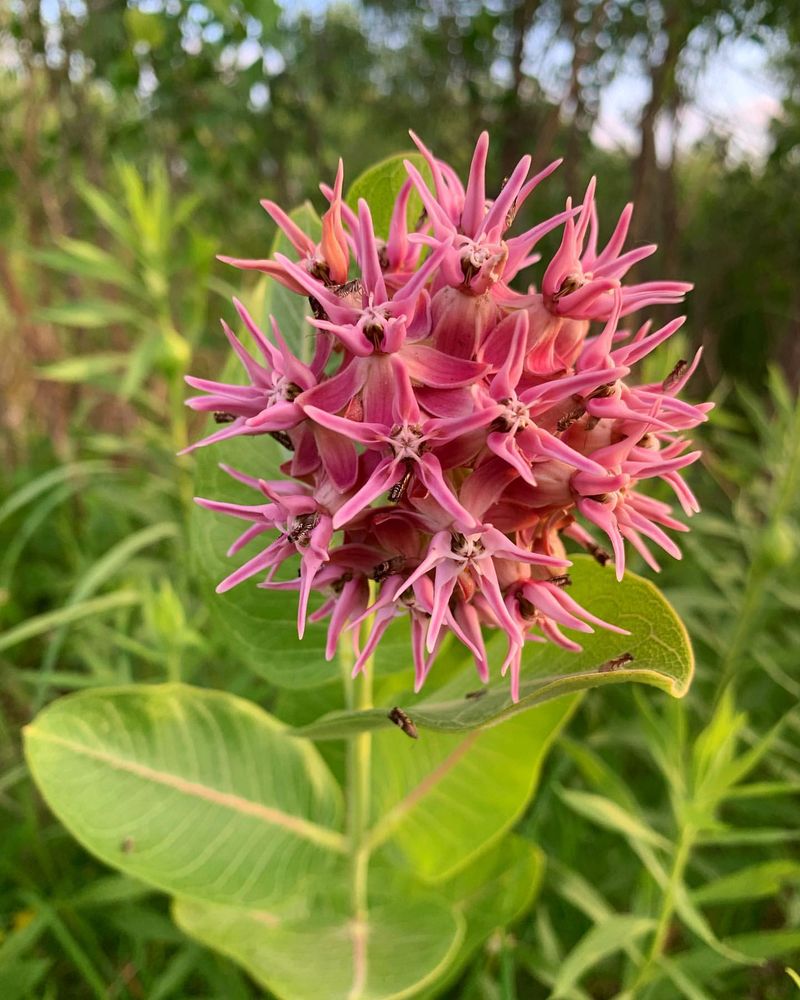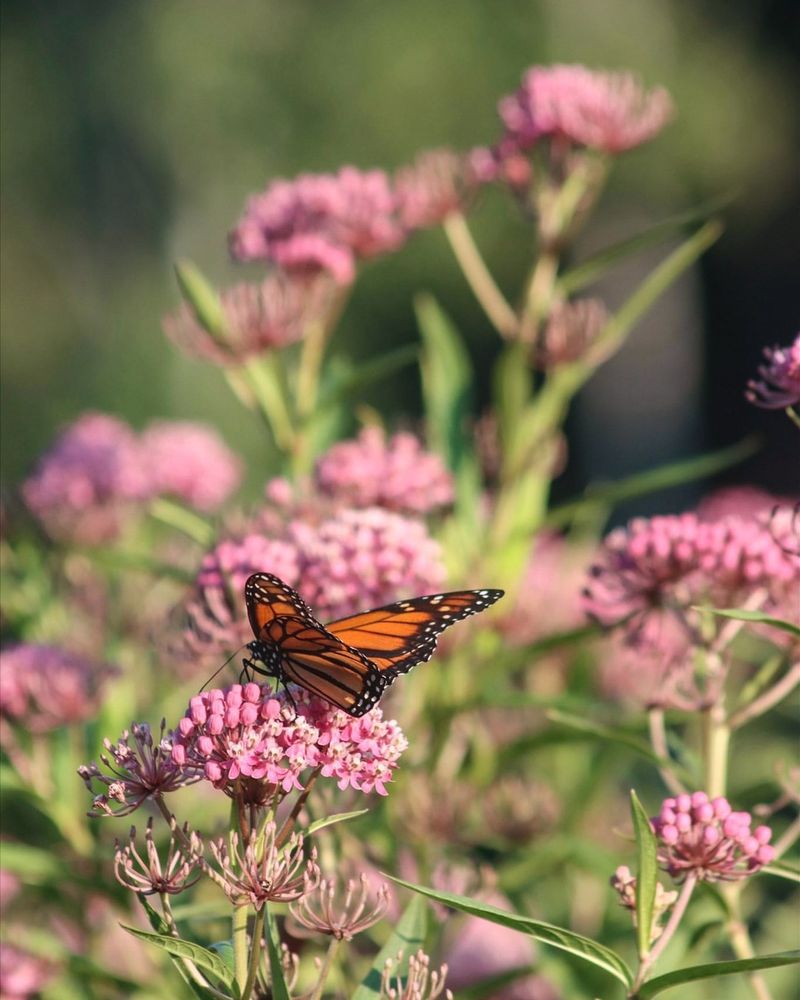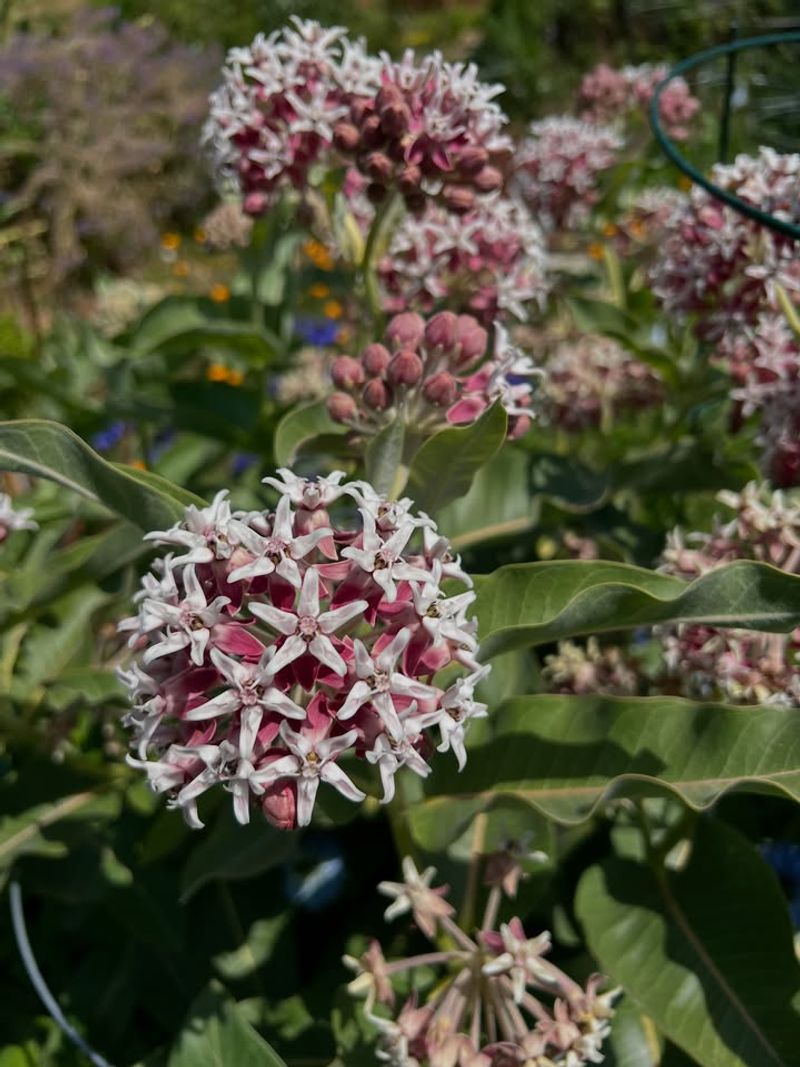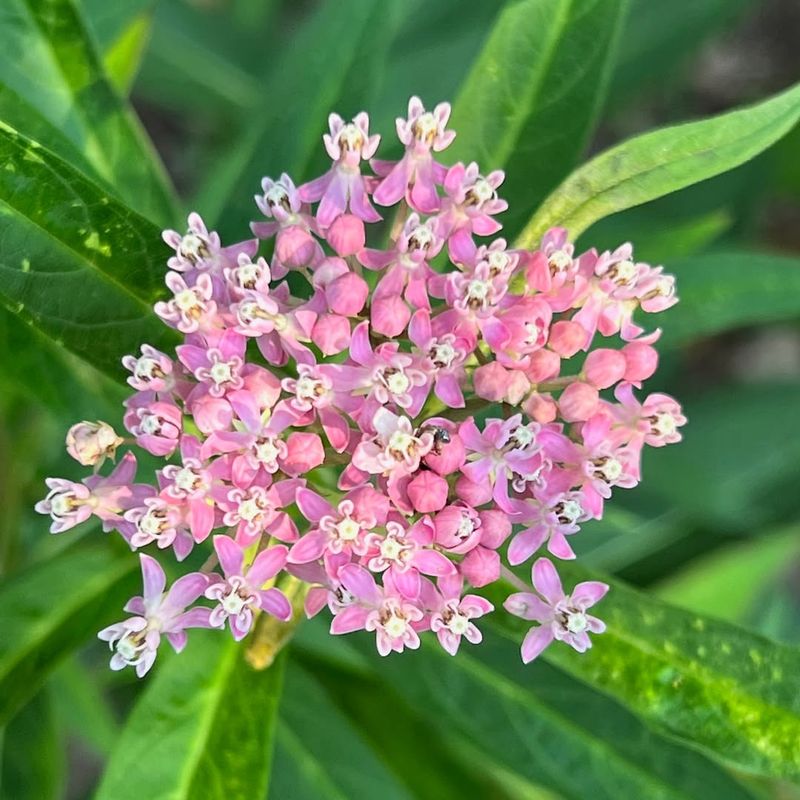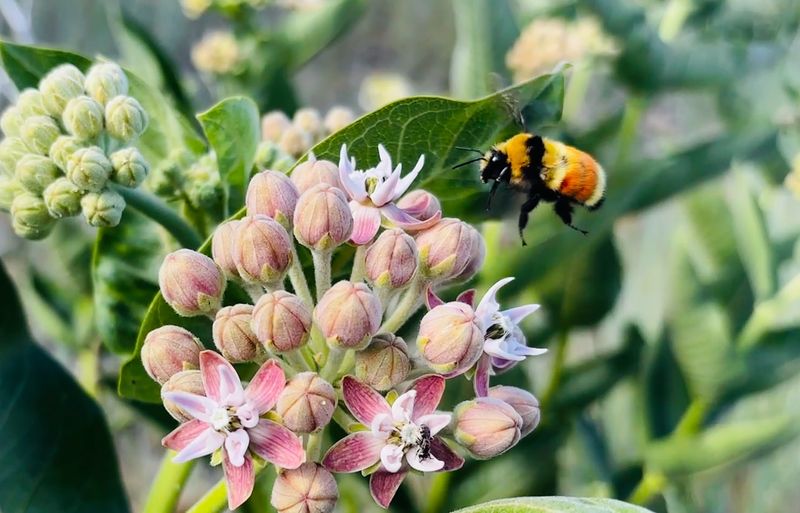Utah gardeners are discovering a beautiful secret weapon for attracting butterflies to their yards this fall. Showy milkweed is becoming incredibly popular across the state, and for good reason.
This native plant not only adds gorgeous pink blooms to any garden but also provides essential food and shelter for monarch butterflies and other pollinators.
1. Native To Western North America
Showy milkweed thrives naturally throughout the western United States, including Utah’s diverse climate zones. Originally found growing wild in mountain meadows and along roadsides, this hardy perennial has adapted perfectly to the region’s dry summers and cold winters.
Gardeners love that it requires minimal watering once established. Because it evolved in Utah’s environment, showy milkweed resists local pests and diseases better than imported plants, making it an easy choice for both beginners and experienced gardeners looking for low-maintenance beauty.
2. Pink Flower Clusters Create Stunning Visual Appeal
Each plant produces spectacular ball-shaped clusters of pink and white flowers that catch everyone’s eye. Blooming from late spring through mid-summer, these fragrant spheres can measure up to four inches across and contain dozens of individual star-shaped florets.
The sweet scent attracts beneficial insects from far away. Planted in groups, showy milkweed creates dramatic color bursts that transform ordinary Utah garden spaces into vibrant butterfly havens, making your yard the neighborhood’s most beautiful spot during peak blooming season.
3. Essential Food Source For Monarch Butterflies
Monarch butterflies depend entirely on milkweed plants for survival, using them as their only food source during the caterpillar stage. Female monarchs lay eggs exclusively on milkweed leaves, and the hatching caterpillars feast on the foliage for several weeks before transforming into chrysalises.
Without milkweed, monarchs cannot complete their life cycle. By planting showy milkweed, Utah gardeners directly support monarch populations during their fall migration south, providing crucial rest stops where these incredible insects can refuel and reproduce.
4. Grows Best In Full Sun Locations
Sunshine is absolutely crucial for showy milkweed to reach its full potential and produce abundant flowers. Plant it where it receives at least six to eight hours of direct sunlight daily for the healthiest growth and most impressive blooms.
Shaded spots lead to weak, leggy stems and fewer flowers. Well-drained soil works best since soggy roots cause problems, but this plant tolerates Utah’s naturally dry conditions wonderfully. Choose south-facing garden areas or open spaces away from trees and buildings for optimal results.
5. Drought-Tolerant Once Roots Establish
After the first growing season, showy milkweed develops deep root systems that tap into underground moisture reserves. Water new plants regularly during their first summer, but established plants need supplemental watering only during extreme drought periods.
This makes showy milkweed perfect for Utah’s water-conservation efforts and xeriscaping projects. The plant’s natural adaptation to arid western climates means you’ll spend less time dragging hoses around while still enjoying beautiful blooms that attract butterflies throughout the growing season.
6. Attracts Multiple Pollinator Species Beyond Butterflies
While monarchs get most of the attention, showy milkweed welcomes an incredible variety of beneficial insects to your garden. Bumblebees, honeybees, hummingbirds, and numerous butterfly species all visit the nectar-rich flowers throughout summer months.
You might spot swallowtails, painted ladies, and fritillaries joining the party. Creating this pollinator paradise helps strengthen local ecosystems while giving you endless opportunities to observe nature’s fascinating interactions right in your own backyard, making every gardening moment more rewarding and educational.

